On the first day of 2018, in the wee hours before dawn, Brad Jacobs sat hunched over the kitchen table of his mid-Missouri home. His dog lay on the floor beside his chair, whining occasionally for attention. His cat meowed, expecting breakfast. Brad stirred a handful of pecans into his yogurt, lost in thought.
He was a man wrestling with a decision — a choice so paramount it would affect almost every aspect of his life over the coming year.
Outside, the temperature hovered at negative 9 degrees. How easy, he thought, it would be to crawl back into bed. Instead, as he often did when he needed to clear his mind, Brad grabbed his binoculars and headed off to chase birds.
A Lead-Off Shrike
The tires of his SUV crunched on frozen gravel as he drove west. The vehicle’s interior was littered with maps, notebooks, and birding paraphernalia. A cup of coffee, left over from the night before, rattled in the cup holder, and Brad sipped “cold brew” as it thawed.
With its smorgasbord of crop fields and grasslands, the farm he arrived at was known locally as a bird magnet. But on what would end up being the coldest day of 2018, Brad had to canvas the patchwork of barren fields several times before he found what he was searching for. Perched on a power line, with its feathers fluffed up against the bitter cold, was a northern shrike.
Two species of shrikes, northern and loggerhead, turn up in Missouri. Both have nearly white bellies, gray backs, and black masks over their eyes. If the two sat side by side, a beginning birder might think they were the same species. But the northern shrike is here only from November to March. It is slightly bigger than the loggerhead, has a thinner black mask, and the tip of its beak has a tiny but noticeable hook.
Also — and this is key — the northern shrike is a much rarer find in Missouri.
The Mother of All Lists
Most birders go birding simply for the pleasure of watching a winged creature go about its life. But many birders are also obsessive list-keepers. They keep yard lists, county lists, state lists, month lists, year lists, life lists. Equal parts résumé, memoir, and travelogue, the lists record the species, dates, and locations that commemorate a birder’s existence. And, as often happens when people tally their achievements, list-keeping has become something of a sport.
In one of the simplest competitions, birders vie to see how many species they can record from midnight to midnight. In Missouri, such efforts are usually undertaken in May when a flush of northbound migrants promises ample species to count. The result is called a Big Day, and Missouri’s record is 208 species.
The pinnacle of competitive birding, however, is the Big Year. In this, hardcore birders zigzag across the world, a continent, or a particular region to tally as many feathered creatures as possible in a year. In 2016, John Weigel shattered the North American record by tallying 783 species. In 1991, Timothy Barksdale set a new Missouri Big Year record with 314 species. Though this may sound unimpressive to a nonbirder, consider this: Barksdale recorded 40 percent of the birds found on the continental list, but he did it within the relatively tiny confines of the Show-Me State.
To beat such a record would require careful planning, hard work, and no small amount of luck.
Close, But No Record
In November 2016, after 29 years of working for the Missouri Department of Conservation, Brad hung up his hat as state ornithologist. A paradox of his profession was that while he devoted countless hours to bird conservation, he was left with relatively few moments for bird-watching.
Retirement offered a chance to make up for lost time, and Brad hoped to do so in a big way. He wanted to set a new Missouri Big Year record.
By November 2017, he had surpassed his personal Missouri Big Year when he spotted a red-necked grebe near St. Charles. By the end of December, he had picked up 10 more birds. Yet despite his incredible effort — rising before dawn every day, crisscrossing the state to chase rare birds, spending more than 200 days afield — he had managed to tally 310 species, four fewer than the state record.
Now, as a new year of chasing birds stretched out ahead of him, Brad wondered if he had the stamina — or the desire — to attempt the record again.
A Northern Visitor
A few months earlier, Brad had photographed an evening grosbeak at a bird feeder in northeast Columbia. Evening grosbeaks are known to biologists as an “irruptive species.”
Most of the time, they spend their lives munching on seeds, berries, and buds in coniferous forests far north of Missouri. But every few years, grosbeaks mysteriously appear in places south of their normal winter range. And then, just as mysteriously, they vanish.
Brad figured if the feeder was well-stocked with sunflower seeds, there might be a chance the grosbeak could still be found. And sure enough, as he eased into the driveway, he spotted a heavyset finch with a massive, seed-crushing beak.
On New Year’s Day, while most of us were still sleeping off the excesses of 2017, Brad Jacobs had already recorded two rare birds for the year.
Perhaps, he decided, another run at the Big Year wasn’t out of the question.
Plan of Attack
According to Missouri’s Bird Records Committee, 435 feathered species have fluttered, flapped, swooped, or soared through the Show-Me State at one time or another. Five species, including the passenger pigeon and the Carolina parakeet, are now extinct. Three species, such as the red-cockaded woodpecker, once occurred in Missouri but haven’t been seen in these parts for decades. And 12 species are listed as “provisional,” which is a fancy way of saying the evidence for the bird isn’t definitive enough to confirm its sighting.
The committee groups the remaining 415 species into five categories: common, uncommon, rare, casual, and accidental. Birds in the common category (think American robins) can be observed daily, often in large numbers. At the other end of the continuum, accidental birds have been recorded fewer than five times in Missouri.
Brad knew that it should be easy to find all the common and uncommon birds on the list. But to surpass Barksdale’s record, he would be challenged to find at least 50 additional birds. He hatched a plan of attack: He would pick up common birds in his day-to-day outings. When a rare bird was reported, he would drop everything and chase it. He kept a spreadsheet with separate columns for common, uncommon, rare, casual, and accidental species. As he added birds to his Big Year list, he shaded them on the spreadsheet. This way, he knew at a glance which ones he still needed to pick up.
In theory, this plan seemed simple. In practice, it was grueling.
On most days, Brad woke between 1 a.m. and 3 a.m., quietly gathered his gear, and then drove to some far-flung corner of the state to track down a rarity. Once he found it, he would bird his way home until sundown, picking up as many other species as he could.
At night, he pored over rare bird sightings on the internet, including eBird (ebird.org), an online clearinghouse of real-time sightings. He also received daily tips from his extensive network of birding friends via email, phone, or text.
Starting with a Nuthatch
Brad identified his first bird at age 11 when he saw a whitebreasted nuthatch creeping down the trunk of an apple tree in the backyard of his parents’ Massachusetts home. He didn’t know it then, but that ubiquitous gray-and-white bird set in flight a passion for winged creatures that would last for more than six decades.
After graduating from Cornell University, Brad joined the Peace Corps and flew off to Colombia. There, in the Amazon Basin, he taught conservation and ecology to national park wardens. In return, the wardens helped Brad hone his Spanish. A third year with the Corps sent him to the Galápagos Islands. As a biologist at the Darwin Research Center, he taught bird workshops for high school teachers, surveyed endangered Galapagos petrels, and banded albatrosses, boobies, and tropic birds.
Back stateside, Brad found work in the construction industry. In the 1980s, he landed a job teaching building trades on the Navajo Reservation in Arizona. He spent his free time birding the desert and scrubland, and published Birding on the Navajo and Hopi Reservations. The book was an instant success, and he quickly had to print a second run to meet demand.
In 1987, Brad joined the Missouri Department of Conservation as a natural history biologist. His first job: raising nestling bald eagles at Schell-Osage Conservation Area. Other bird related tasks followed. He slogged through gumbo muck to survey stealthy marsh birds. He banked over Ozark rivers in a small plane to locate wild cane thickets so he could check them later for rare Swainson’s warblers. He spearheaded a herculean effort to map all the bird species that nest in Missouri, the results of which culminated in the Missouri Breeding Bird Atlas. And he wrote another book, Birds in Missouri, the definitive guide to the Show-Me State’s feathered fauna.
At the turn of the millennium, Brad began working with Partners in Flight, an organization created to protect migratory birds. He formed partnerships with other states and Canadian conservation agencies. He summoned the Spanish he learned during his Peace Corps days to foster relationships with Central American and South American conservationists. He worked tirelessly, setting in motion a hemispheric effort called Southern Wings that laced together patches of nesting, stopover, and wintering habitat from the Arctic tundra to the Patagonian steppes.
This was the thing Brad was proudest of in his long career. This was his legacy to future bird lovers.
Sharing a Spoonbill
By the end of January, Brad had racked up over 100 species. By April, he had 200. And by May, he had checked off 300 — just 15 species shy of the record.
One afternoon in June, a naturalist at Mingo National Wildlife Refuge reported that a roseate spoonbill had been spotted on the 21,000-acre swamp. Brad dropped everything and drove south. He arrived at the refuge at 3 p.m. and scoured the wetland for hours, but he couldn’t find any sign of the spoonbill. Just before sundown — as a last-ditch attempt — Brad set up his spotting scope at an overlook and painstakingly surveyed the marsh. And there it was, a bubble-gum pink wading bird with a spatulate bill.
Chasing Rare Birds
Cave swallow, wood stork, rufous hummingbird, white ibis, anhinga. Bird by bird, Brad doggedly bagged one rarity after another.
On Sept. 24, while preparing for a bird identification workshop at Eagle Bluffs Conservation Area, Brad and his friend Paul McKenzie noticed a nondescript brown bird land in the grass 10 yards away. They swung their binoculars up to take a look.
It was a sparrow, but what kind? Brad ticked off field marks: Flat head. Short tail. Orange wash on the head and breast. Gray cheek. Gray, unstreaked nape.
There was no doubt about it. It was a Nelson’s sparrow, a great bird to share with the workshop attendees. It also happened to be Bird No. 314.
Brad had just tied Barksdale’s record.
The Last Laugh
Two days later, with Paul and Pete Monacell as copilots, Brad set out early on a gull reconnaissance mission. The three spent most of the day at Long Branch State Park, sweeping spotting scopes through gulls loafing lazily along the lake’s shoreline. Gull by gull they peered at dozens, hundreds, thousands of birds, hoping to sort a rarity from the run-of-the-mill. By midafternoon, they realized a new bird wasn’t to be found.
On the way home, they stopped at Thomas Hill Reservoir to set up scopes at a lookout appropriately named “Gull Point.” Thousands of gulls were strung out on the far shore, half a mile away. Brad, Paul, and Pete painstakingly looked at each one. An hour later, Paul let out a yelp. He’d spotted a first-winter laughing gull. Despite precise directions, Brad could not find the bird. With the sun quickly setting, he swept his scope back and forth, over and over. Finally, he saw it, a large brown bird that couldn’t be anything but a laughing gull. But this was an important find, and Brad needed proof. Nearly in panic, he connected his iPhone to the scope and videotaped half a mile of gulls.
Late that night, on his home computer, he looked at the video and confirmed the ID. It was definitely a laughing gull. More importantly, it was Bird No. 315. He had just broken Timothy Barksdale’s 27-year-old record.
A Sky-Blue Bird
Brad continued to bird through the fall and into winter. Pomarine jaeger, Sabine’s gull, rock wren, snow bunting, long-tailed duck, black scoter, western grebe. Bird by bird, he padded his Big Year with rarities.
On Nov. 30, he drove to St. Clair County, hoping to find a mountain bluebird seen the day before. It had been hanging out in a triangular patch of pasture near Wah’Kon-Tah Prairie. Brad drove the perimeter of the triangle more than 10 times before he found the bluebird. It would turn out to be the last new bird he saw in 2018, and it brought his final tally to 323. Brad snapped a picture of it perched on a fence post, a sky-blue bird against a bluebird sky.
Lists — Not Just for Keeping Score
Birders’ lists aren’t just for keeping score. Using online applications such as eBird, lists can be made available almost instantaneously to other birders and scientists. This helps bird enthusiasts track down a once-in-a-lifetime sighting before it flies away or simply learn what has recently been seen in their area.
Uploaded lists have also revolutionized scientists’ understanding of bird biology. On average, the eBird database receives a checklist from someone, somewhere in the world every 7 seconds. This astronomical amount of data helps biologists learn more about migration routes, habitat use, timing of nesting, and shifts in population sizes and ranges across local, regional, and continental scales.
Online Resources For Birders
ebird.org
Birders post their sightings for biologists and other birders to use.
mobirds.org
The Audubon Society of Missouri offers flocks of bird-related information, including a birder’s calendar and the official checklist of Missouri’s birds.
mobirds.org/RecordsCommittee/Doc.aspx
If you find a rare bird, this page explains how to document it.
greatmissouribirdingtrail.org
The Great Missouri Birding Trail maps the hottest birding locations in the state.
allaboutbirds.org
Cornell’s online field guide has nearly everything you ever wanted to know about birds.
Brad’s Big Year by the Numbers
- 323 Bird species recorded out of 415*
- Days spent birding: 249
- 82 Counties visited
- 59 Rare, casual, and accidental birds recorded
- Other birders who also surpassed Barksdale’s Record: 4
- "Easy” birds missed: 1 (Sprague’s pipit)
- *according to the annotated checklist of Missouri Birds from the Audubon Society of MO, August 2018
Tips for Big Year Chasers
Got dreams for chasing your own Big Year? Here’s a bit of advice from the recordholder himself.
- Treat every year as a personal Big Year. Every year after that, strive to see more birds.
- Learn all you can about bird behavior. Knowing when and where birds are likely to turn up will help you find more birds.
- Use a checklist. Missouri’s official one can be found at mobirds.org/Birds/MOChecklist.aspx.
- Find a mentor. The more you bird with better birders, the better a birder you will become.
- Share what you know. Post your sightings on eBird. Help other chasers find rare birds. Take a young birder under your wing.
Brad’s Rare Birds
Of the 59 rare, casual, and accidental birds Brad spotted in 2018, more than half were found on public land. Although there’s no guarantee that you’ll spot a rare bird if you visit, there’s no guarantee that you won’t.
- B.K. Leach Memorial CA in Lincoln County, King rail
- Bradford Farm (University of Missouri) in Boone County, Northern shrike
- Carondelet Park in St. Louis City, Black-throated blue warbler
- Duck Creek CA in Wayne County, White ibis
- Eagle Bluffs CA in Boone County, Black-bellied whistling-duck, Piping plover, Red-necked phalarope, Ruff
- Fellows Lake in Greene County, Pacific loon
- Four Rivers CA in Vernon County, Marbled godwit, Neotropic cormorant
- Grand Pass CA in Saline County, Golden eagle
- Hawn State Park in Ste. Genevieve County, Red crossbill
- Long Branch State Park in Macon County, Snow bunting
- Mark Twain Lake in Monroe County, Red phalarope
- Riverlands Migratory Bird Sanctuary in St. Charles County, Glaucous gull, Lesser blackbacked gull, Long-tailed duck, Sandhill crane, Tundra swan, White-winged scoter
- Schell-Osage CA in St. Clair County, Glossy ibis, Western sandpiper, Yellow rail
- Smithville Lake in Clay County, Black scoter, Iceland gull
- Taberville Prairie CA in St. Clair County, Greater prairie-chicken
- Table Rock State Park in Stone County, Red-throated loon, Western grebe
- Thomas Hill Reservoir in Randolph and Macon counties, Laughing gull, Sabine’s gull
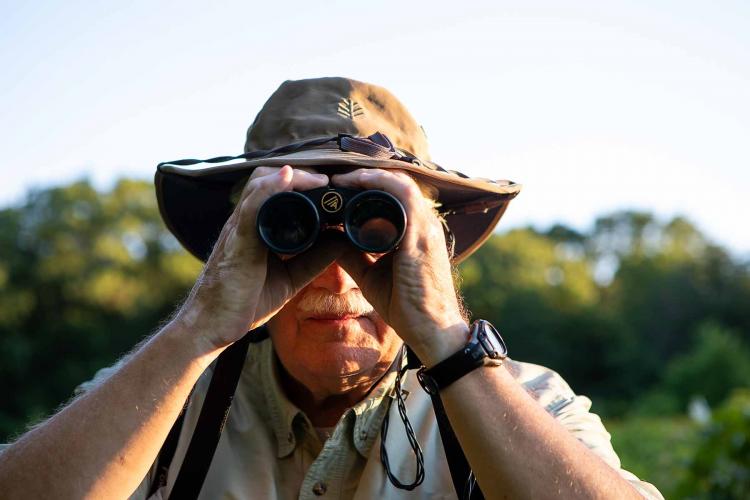
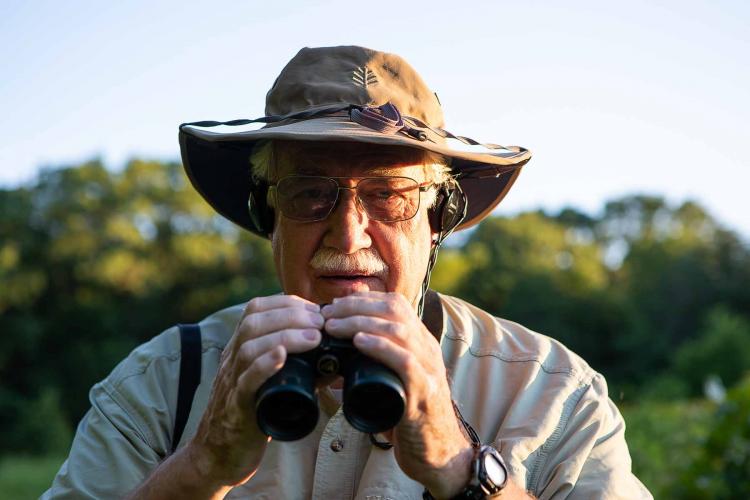
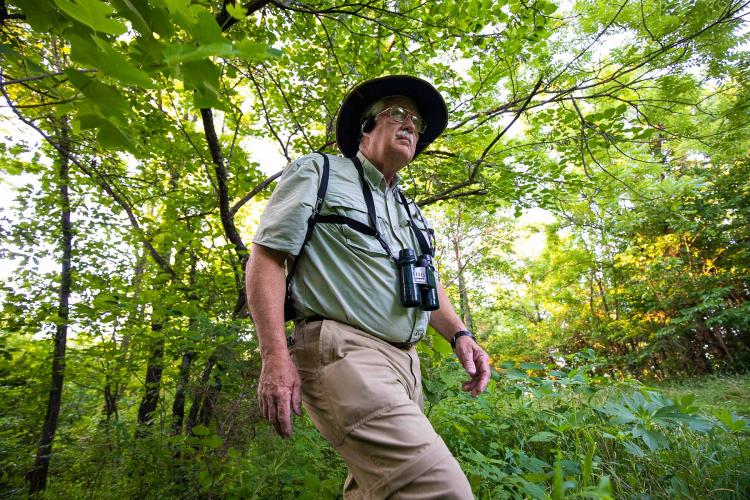
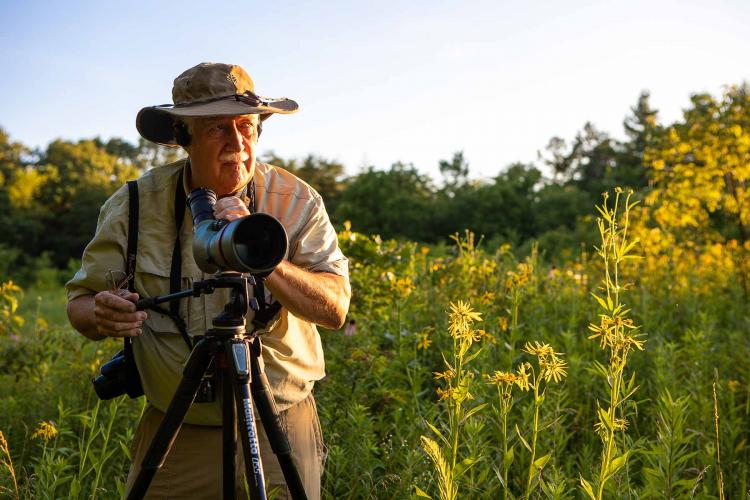
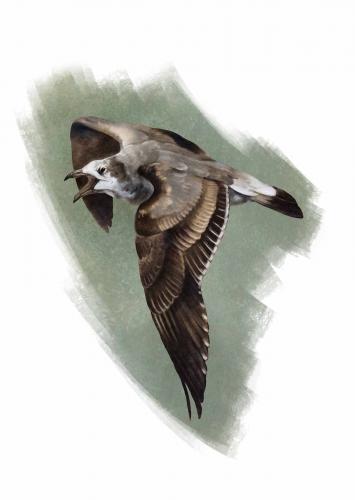
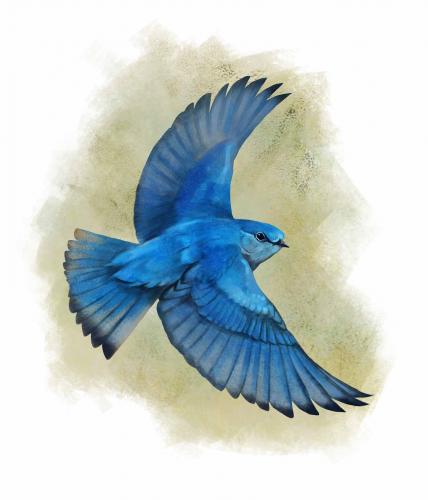
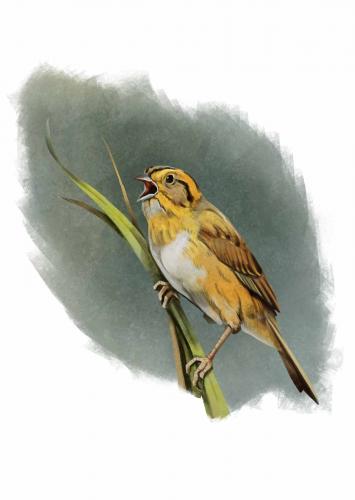
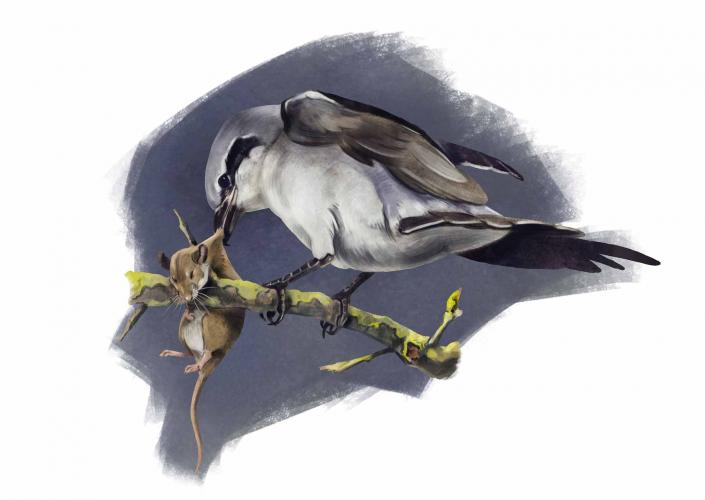
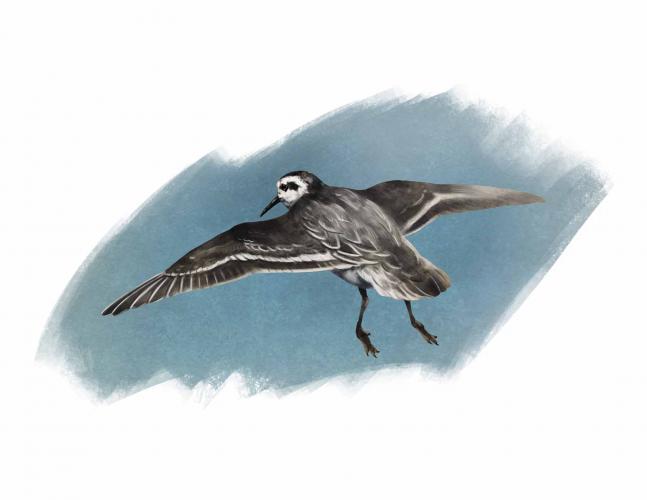
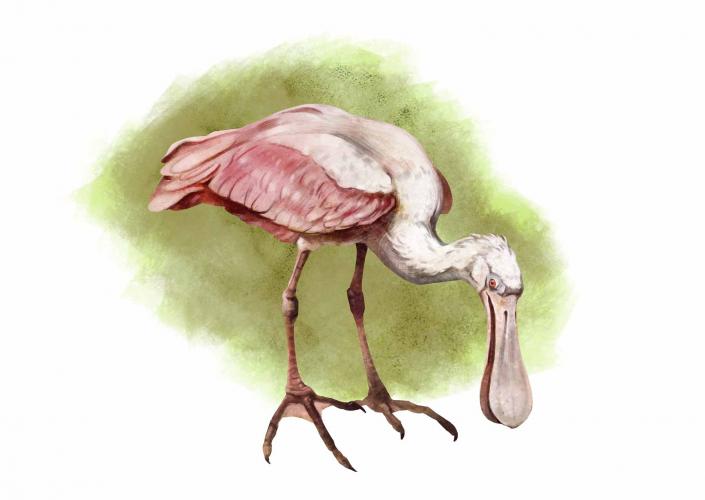
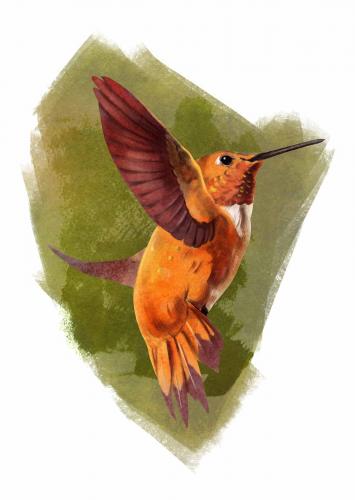
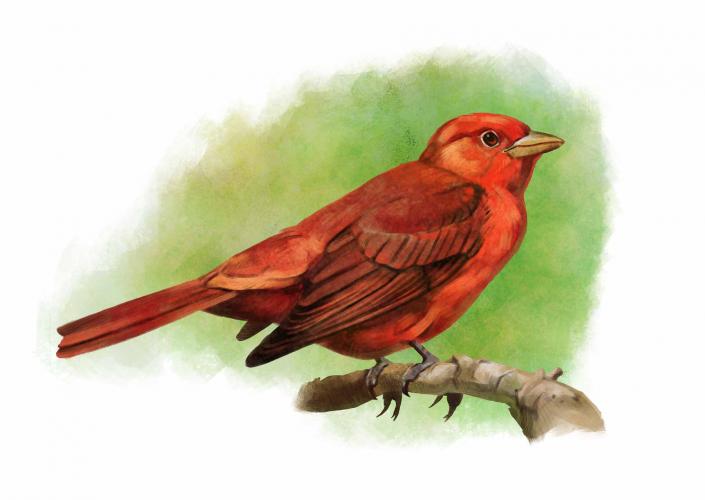
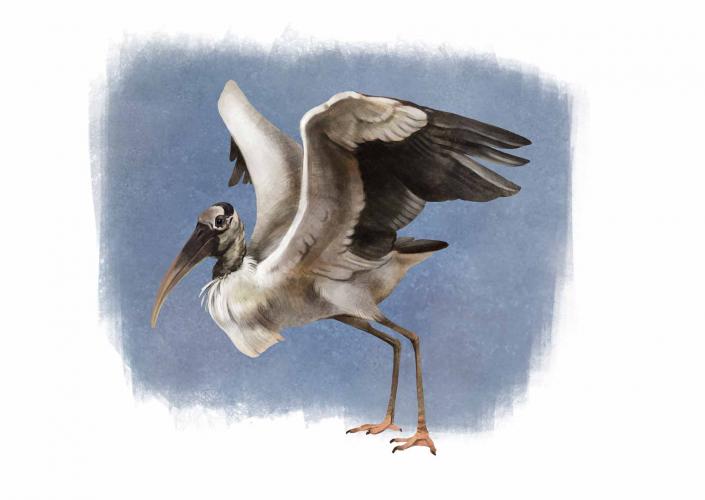


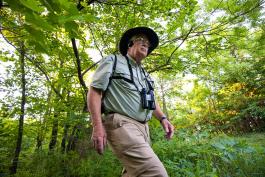
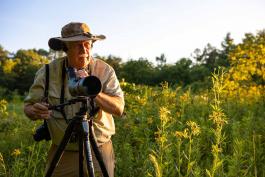
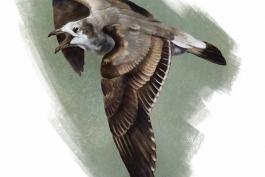
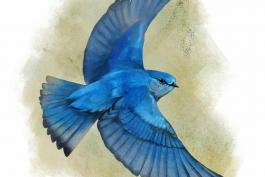
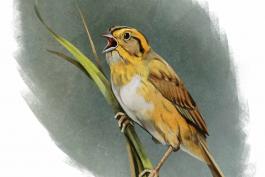
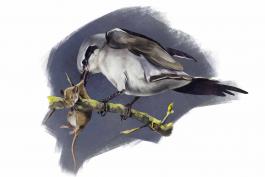
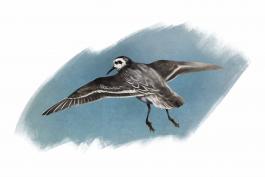
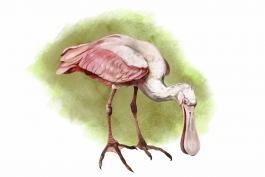
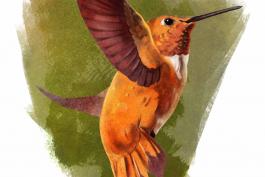
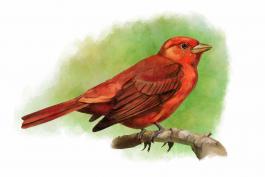
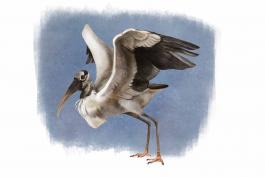
Also In This Issue
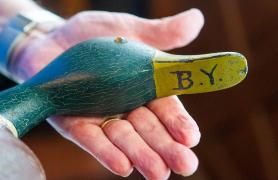
And More...
This Issue's Staff
Editor - Angie Daly Morfeld
Associate Editor - Larry Archer
Staff Writer - Bonnie Chasteen
Staff Writer - Heather Feeler
Staff Writer - Kristie Hilgedick
Staff Writer - Joe Jerek
Art Director - Cliff White
Designer - Les Fortenberry
Designer - Marci Porter
Photographer - Noppadol Paothong
Photographer - David Stonner
Circulation - Laura Scheuler






















